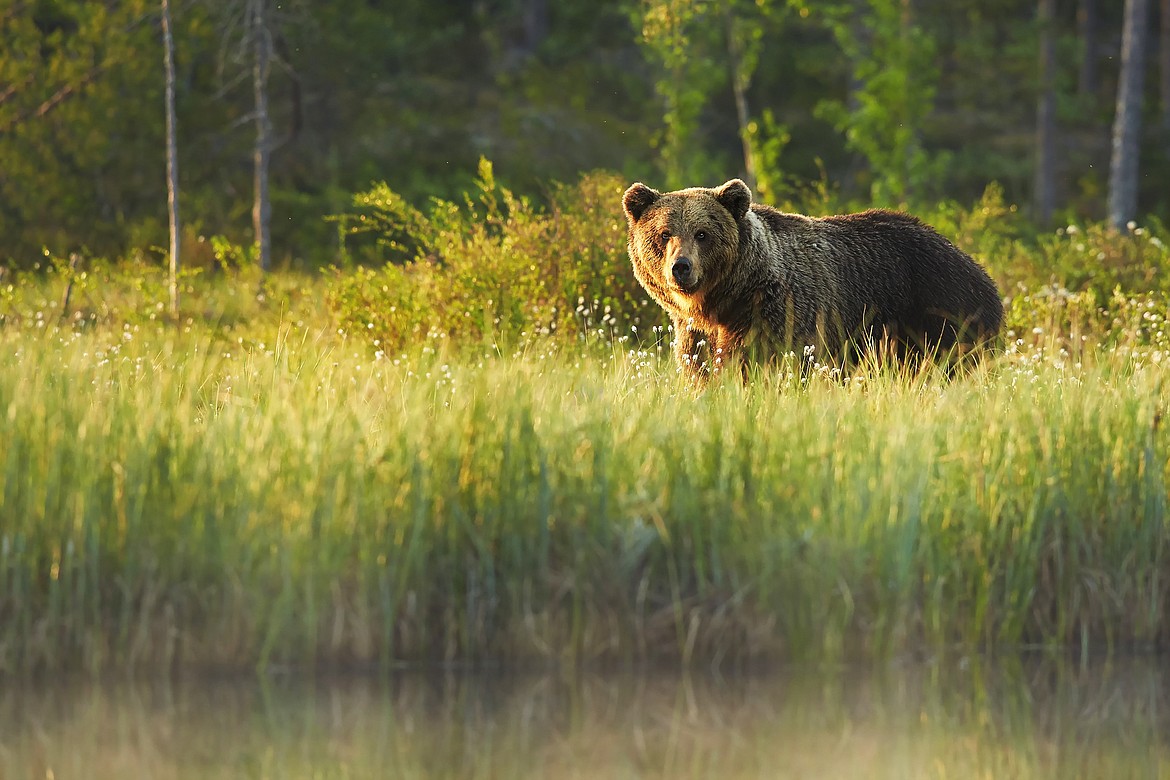Grizzly recovery efforts looking up in Panhandle
Grizzly bear recovery is in full swing in the Idaho Panhandle and northwestern Montana and officials are looking for ways to mitigate negative interactions between humans and bears as the populations of both continue to rise.
The Panhandle Forest Collaborative recently held a meeting to update its members on all things grizzly in the nearby recovery areas and campgrounds. Wildlife biologist Wayne Kasworm of the U.S. Fish and Wildlife Service out of Libby, Mont., said grizzly bear recovery in the Selkirk and Cabinet-Yaak mountains is slowly continuing to improve.
An extremely complex topic, Kasworm said the department looks at three main things when attempting to gauge recovery: females with young, distribution of those females with young within the recovery areas and mortality rates.
Preferably, Kasworm said he wants to see six females with cubs yearly over the span of six years. Right now, the Cabinet-Yaaks are averaging roughly 3.3 mothers with cubs and the Selkirks are averaging 3.7.
“While there’s no specific number we’re hoping for, those numbers would equate to about 90 to 100 bears [in each mountain range],” Kasworm said.
Kasworm also said it’s a bit harder to track bears in the Selkirks as opposed to the Cabinet-Yaaks because that mountain range stretches up into Canada, which has less grizzly research being conducted.
“One of the difficulties in the Selkirks for us is that this goal counts in the Selkirks in British Columbia, too,” he said.
While they collaborate as best they can with Canadian researchers, some bears might be overlooked or counted twice during data collection.
Kasworm’s team focuses on human-based mortality rates in grizzly bears as it’s much easier to track than bears that die of natural causes in remote areas that may not be able to be collected for evaluation. From 2017-2022, nine grizzly bears were killed in the Cabinet-Yaak Mountains. In that same time frame, 14 grizzlies were killed in the Selkirks.
The Fish and Wildlife Service also uses telemetry monitoring — putting collars on grizzly bears — to help track their whereabouts and their populations. This helps the team know which bears travel in and out of the recovery zones and whether they come back or stay away for the rest of their lives. Roughly 20 bears have collars in both mountain ranges right now.
With this monitoring, Kasworm has been able to determine that grizzly bear populations in the Selkirks have annually increased by roughly 2.6% since 1983 and by 1.6% in the Cabinet-Yaaks in that same timeframe. These numbers mean there are an estimated 60 grizzlies in the Cabinet-Yaaks and 50 in the United States portion of the Selkirks.
“We have also been transplanting some animals into the Cabinets via the augmentation program,” Kasworm said.
Since 1990, 22 grizzlies have been introduced to the mountain range. While not all of those bears are still there, many have “put down roots” in the Cabinets and some have even had babies.
“Two things are true when transplanting pretty much any large mammal: They don't all stay where you put them, and they don't all live,” Kasworm said.
Since their augmentation, eight bears have left the recovery area, although three returned after their travels. Unfortunately, five of those bears have died. Despite that, Kasworm said five of those augmented bears have reproduced. Currently, there are 15 first-generation, 22 second-generation and four third-generation offspring that have come from those transplants.
Kasworm said he knows that moving bears from their home and putting them somewhere else is a highly controversial issue and doesn’t always work as well as is intended. However, he said his team works hard to do things as well as possible to ensure the success of those grizzlies in their new habitat.
“We take it slow, we take it cautiously,” he said. “We recognize that it's a controversial issue.”
While U.S. Fish and Wildlife has been seeing positive effects in the recovery programs in the Cabinet-Yaaks and Selkirks, Kasworm recognizes that there is still a long way to go and the team is constantly working to improve their programs.
“I'm not saying I've got all the answers and I'm not saying the recovery plan is perfect here, but this is what we’ve got,” he said.
To learn about the grizzly bear recovery program, go online to bit.ly/3rntRct.

